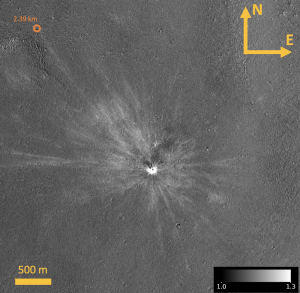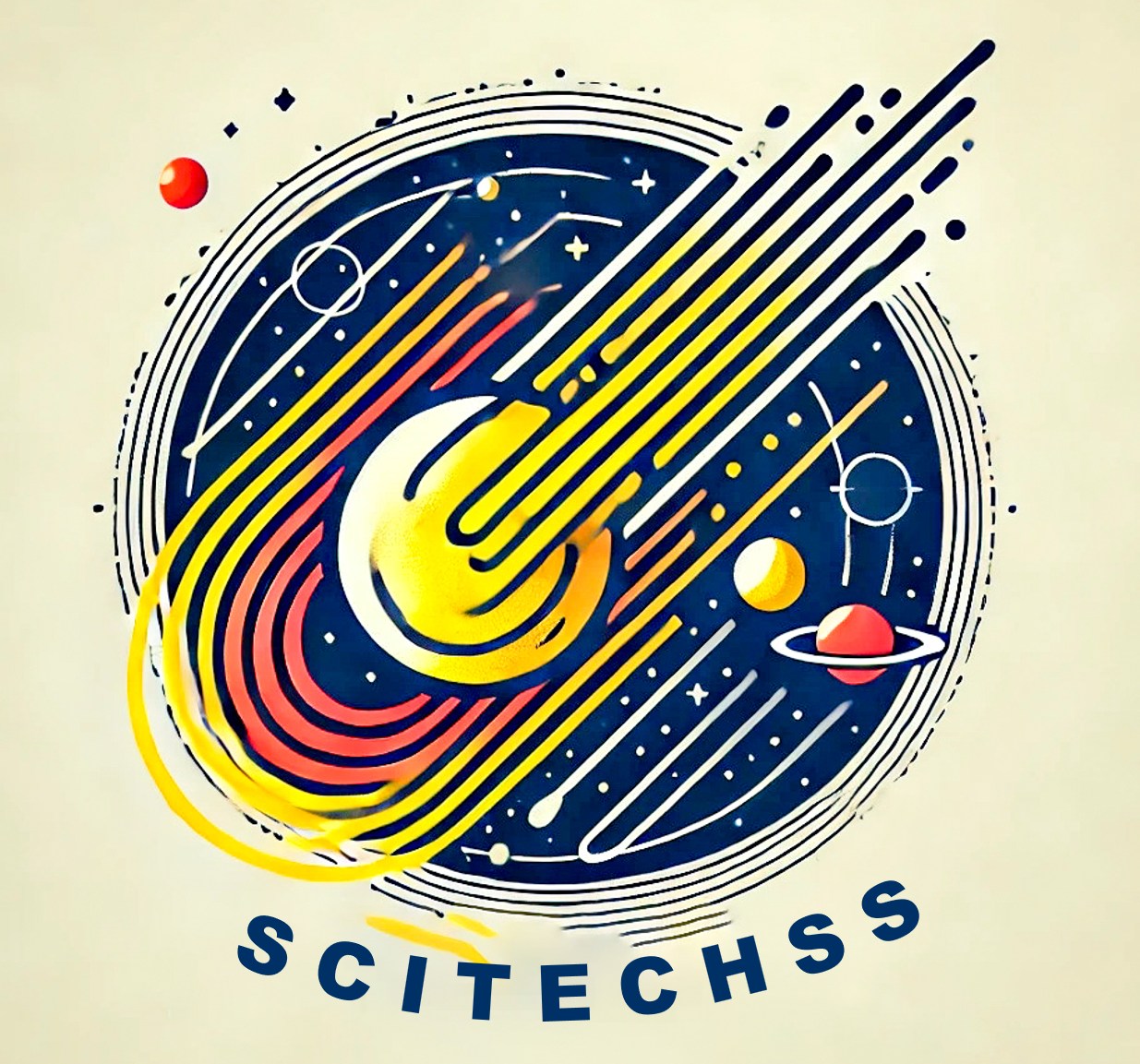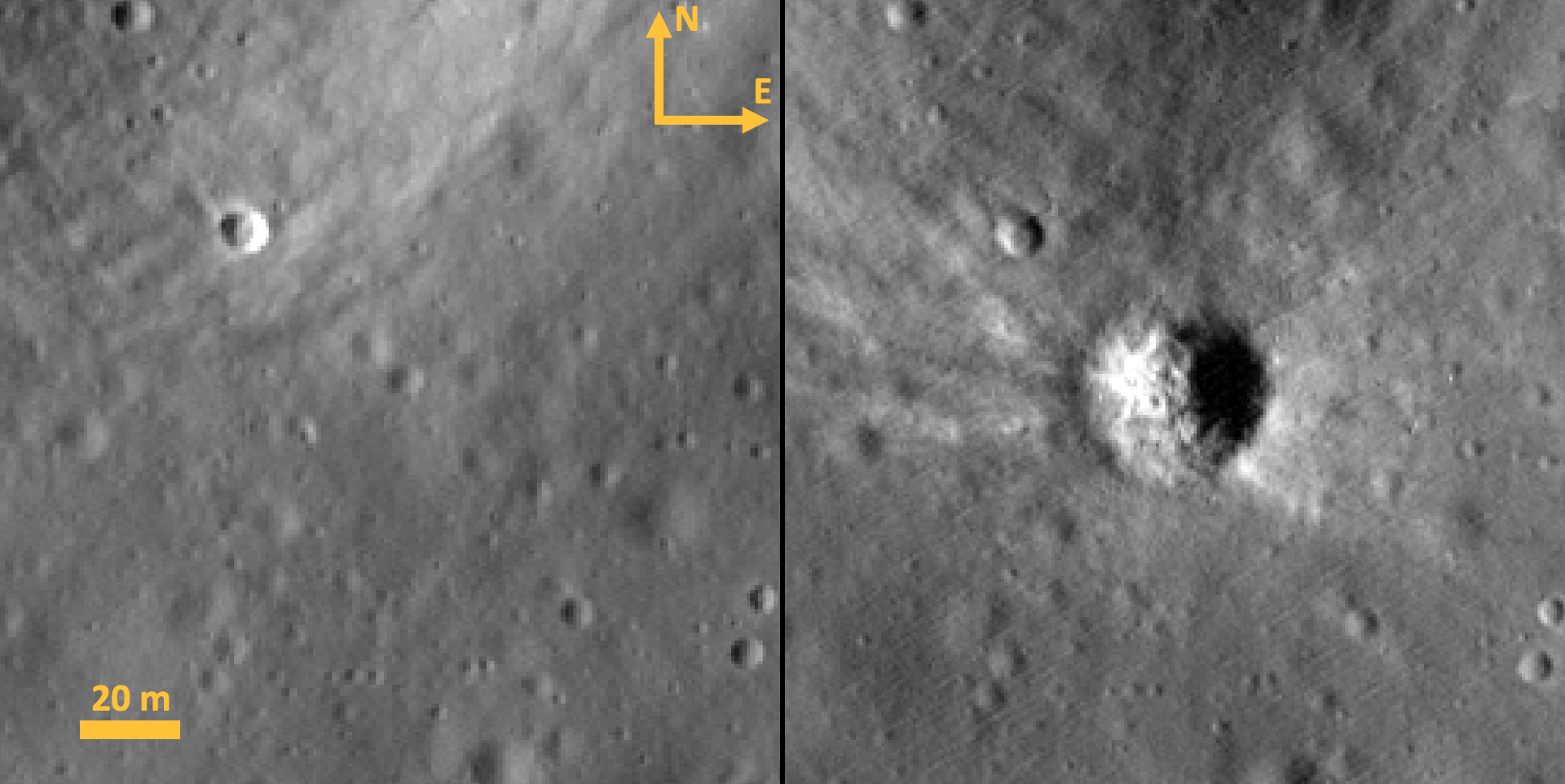A member of our group has led the first comprehensive morphological and spectral analysis of the largest lunar impact detected to date, an event that occurred on 11 September 2013, which was originally identified by IAA researchers through the MIDAS project.
More than a decade later, the IAA has taken the investigation a step further by conducting an in-depth examination of the impact site using images from NASA’s Lunar Reconnaissance Orbiter (LRO). By comparing pre- and post-impact observations from LRO’s high-resolution Narrow Angle Camera (NAC) and its multispectral Wide Angle Camera (WAC), the researchers have characterised both the crater produced by the meteoroid and the spatial distribution and spectral behaviour of the resulting ejecta.

The newly formed crater has an average rim-to-rim diameter of 35 ± 0.7 meters and a depth of 4.9 ± 0.4 meters, as derived from digital terrain models and shadow measurements. The impact spread material across an area of approximately 7 × 10⁵ square meters, with ejecta reaching distances of more than 2 kilometres from the crater. The ejecta displays a clear asymmetry, forming a butterfly-shaped pattern that indicates a low-angle impact—between 10° and 20° relative to the lunar surface.
Beyond the morphological analysis, the team examined the colour properties of the surface using LRO’s seven WAC spectral bands. Although the crater itself cannot be resolved at WAC resolution, the researchers precisely aligned the WAC data with NAC imagery and extracted spectra from the ejecta region. Their results reveal a consistent spectral reddening in the central ejecta, with an average increase in spectral slope exceeding 16% between pre- and post-impact observations. According to the authors, this represents the first reported detection of colour changes caused by a meteoroid impact on the Moon. These colour variations may form the basis of future automated techniques capable of identifying fresh lunar impacts using routine WAC imaging, even when high-resolution NAC coverage is not available.
When the flash was first observed in 2013, it was hypothesised that the impactor might belong to the September ε-Perseids meteor stream, which had produced an outburst two days earlier. Based on crater morphology, impact direction analysis, and probabilistic modelling, the IAA team has now ruled out this association. It confirms that the meteoroid was sporadic, i.e., a fragment of interplanetary debris unrelated to any known meteor shower.
Understanding the effects of meteoroid impacts on the Moon is essential as space agencies prepare for a new era of sustained lunar exploration. Even small impacts pose risks to astronauts, landers, and future surface infrastructure. This work highlights the scientific value of combining ground-based monitoring programs such as MIDAS with long-term orbital missions like LRO.

